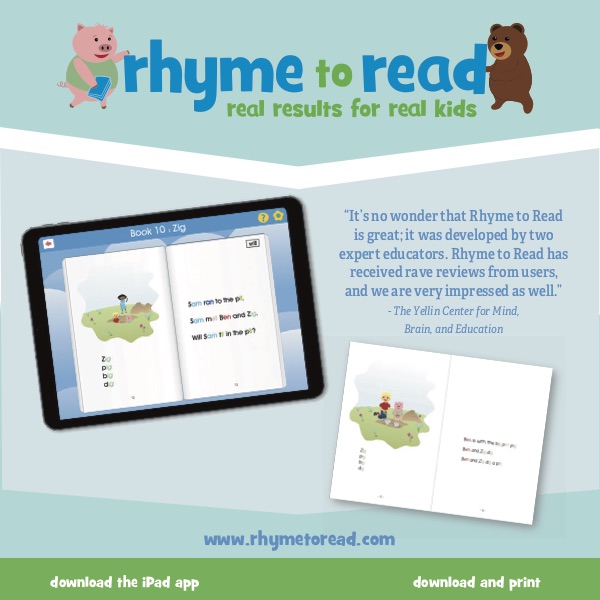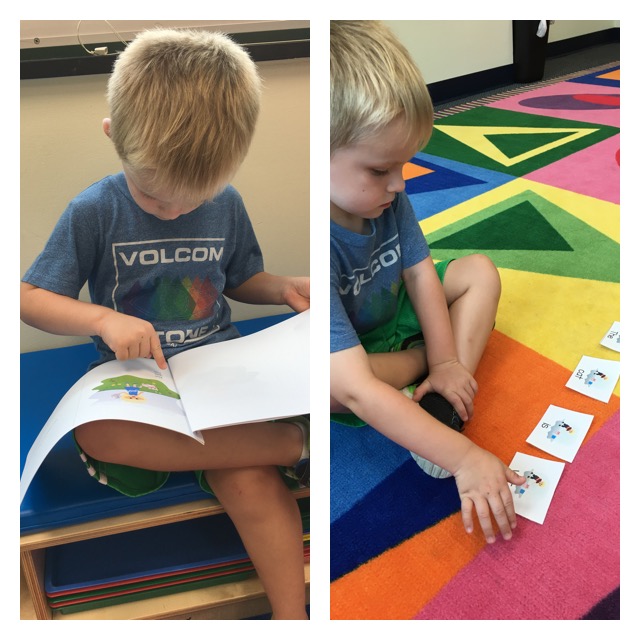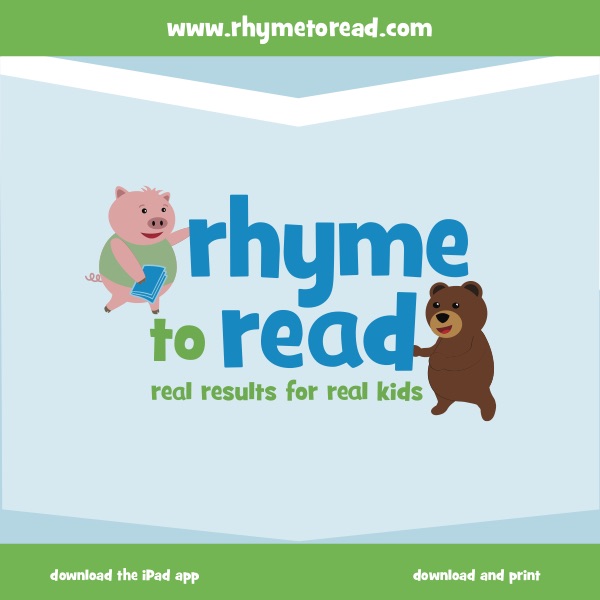Meet Lynn from Rhyme to Read -A Program for Beginning Readers
Early in my teaching career, I could not find the tools readily needed to help kids learn to read in an easy step-by-step way that was interactive, progressive, and fun. When I started looking for such a tool, I had no idea that I would end up partnering with a colleague to author learn-to-read books, see the impact of those books on my students and their wonderful families, and learn so much from this journey. I am not only an educator, but a proud mother of two. One of the things I enjoy the most is watching those “ah-ha” moments when kids start to make the connections needed to learn to read. I guess you could say it is my “why”… why we built these tools, why I am a teacher, an author, a learning mentor, and now a blogger…. If I can help one person unlock understandings for how to read, then I have set them on a path to unlock imagination, innovation, and all the possibilities in their life’s journey

I am excited about this next step in my journey. For years I have shared this tool in collaboration with other educators, on my Facebook page, and the families that reside in the students of their classrooms; now we are taking that next step and sharing this with everyone.
While I am all the things I said above (and like all mom’s, a little more for all the hats we wear!), I am also on a journey that has me humbled by all of the wonderful families that I get to learn from every day, putting myself and books out there in hopes to help more children learn to read, and sharing the tools and tips that I collect along the way.
With the right tools, a little help, and consistency, anyone can learn to read. Since you are here, then I know we have a common goal: share the love of reading with children who can grow up and make the world a better place. I am here to help you because I know you can do this with the children you love
Children are ready for our Rhyme to Read program when they know all of the letter sounds, and are ready to move on to blending the sounds together to make words. Rhyme to Read was designed to make children feel confident and excited as they start their own reading journeys.
Here are some tips for fostering a strong foundation for your own children at home.

Supporting Literacy Development at Home
1. Read to your child every day. This will expose them to vocabulary words rarely used in conversation, introduce them to new cultures, time periods etc, raise interesting topics for conversation, and build skills for reading comprehension later on. Plus, it’s great snuggle time.
2. Talk about print concepts. These are the conventions of book reading. Parents can point out the title and author’s name to their child when reading together, point to words as they read aloud, talk about where reading begins on the page, and show how the words flow from left to right.
3. Support the development of phonological awareness. Phonological awareness is “the ability to recognize and manipulate the sound properties of spoken words, such as syllables, initial sounds, rhyming parts, and phonemes.” Before children learn to read print, they need to become more aware of how the sounds in words work. This is done through listening activities such as playing rhyming games and reading rhyming books, listening for the first or last sound of words and making up silly sentences in which all the words start with the same sound. “Mom made me many meatballs”.
4. Encourage book exploration. When your child sits alone and pretends to read aloud, they are practicing reading behaviors and enjoying literacy.
5. Create reading opportunities in natural settings. Using a recipe to cook together, reading street signs and reading menus are all good examples of reading outside of books.
6. Encourage your child to explore toys and games that build literacy skills such as alphabet puzzles, bathtub letters, memory, and board games.
7. Reading and writing are intertwined. Create fun opportunities for writing such as notes to one another, grocery lists, thank you cards and playing school. Show them what an exciting and useful form of communication writing can be.
8. Foster good comprehension skills when reading books together. Good readers ask themselves questions before, during, and after reading. Ask your child to predict what might happen next in a story. Ask why a character made the choice they did. Connect the story to your own experiences. With non-fiction, ask what they already know about this subject and what they hope to learn from the book.
9. Relax and enjoy being a part of this exciting milestone in your child’s development. It’s truly miraculous!
Happy Reading!!

Lynn Klaiman
Lynn has over 25 years of experience as a classroom teacher and reading specialist at both public and private schools. Her passion for helping young readers was the inspiration behind the Rhyme to Read program. At present, Lynn is a lower school learning specialist at an independent school in Washington, D.C. She holds a master’s degree in Reading Education.
https://www.instagram.com/rhyme_to_read
